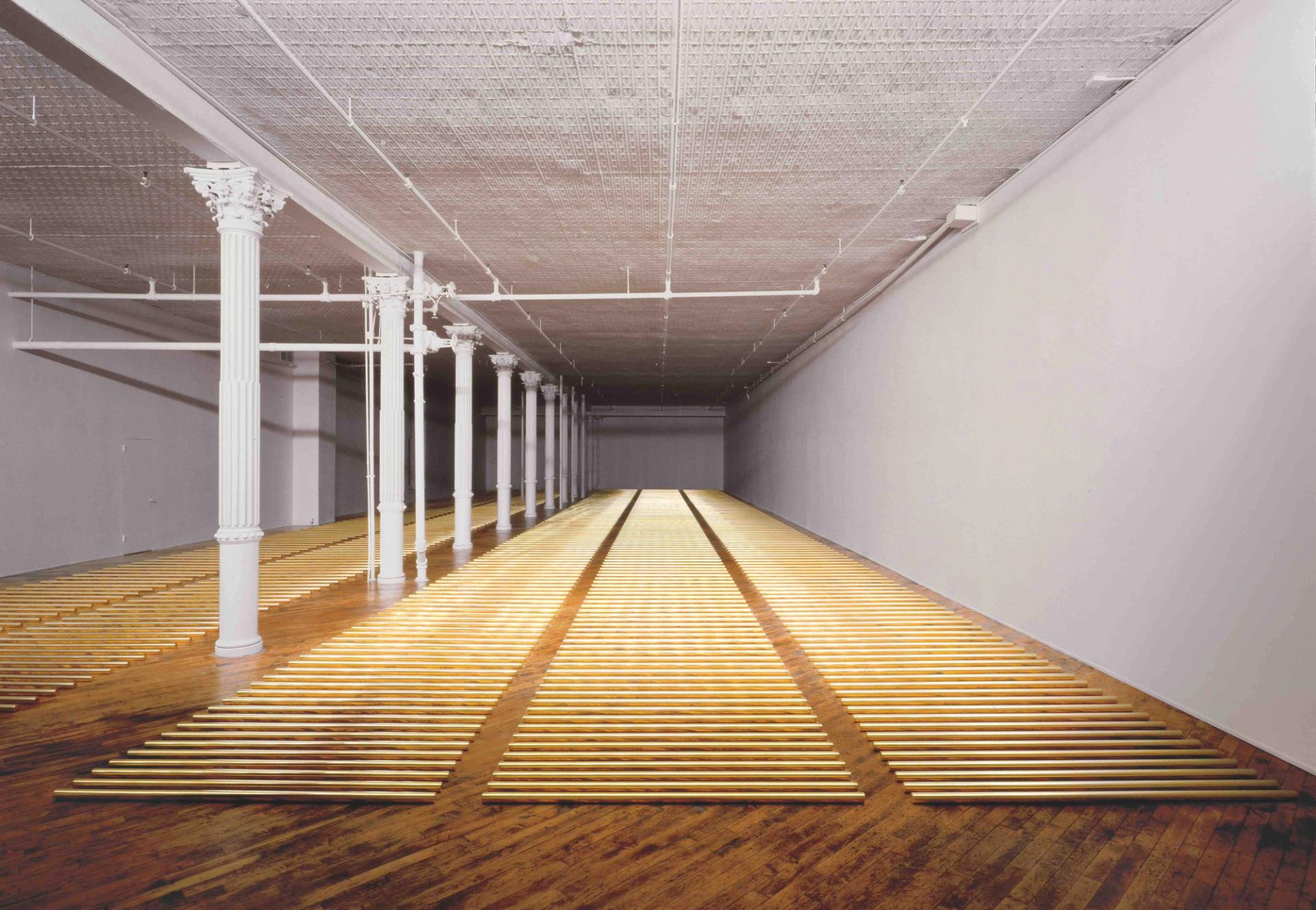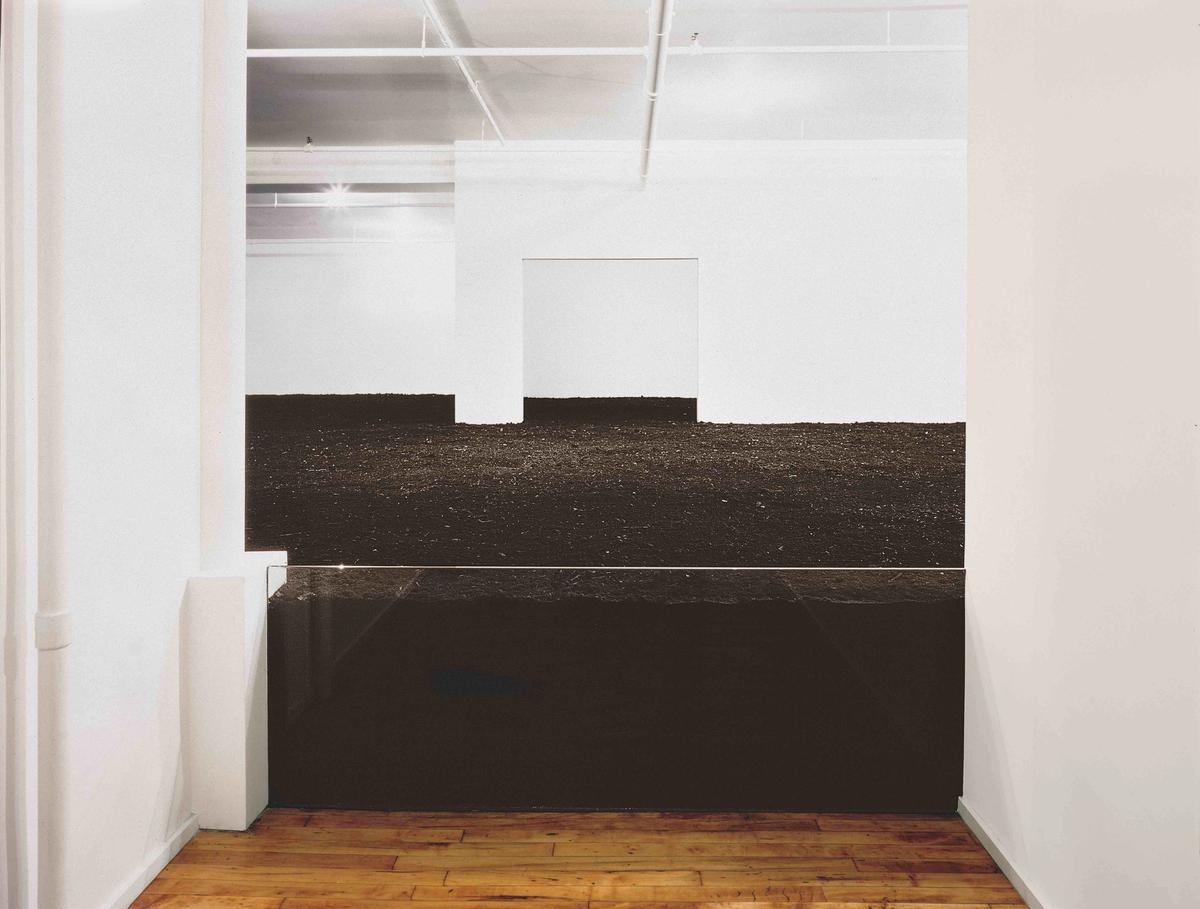Walter De Maria’s New York Earth Room and The Broken Kilometer, which were installed in Soho in 1977 and 1979 respectively and have been on view ever since, are temporarily closing for renovations. The two sites have historically closed for the summer months, and the renovations will allow them to remain open year-round. The installations close on 19 June, and Broken Kilometer is expected to reopen in the fall of 2022, while Earth Room will reopen in early 2023.
New York Earth Room was De Maria’s third “Earth Room” installation—the first two were both carried out in Germany and no longer exist—and consists of 250 cubic yards of earth spread out 22-inches high across 3,600 sq ft of a loft on Wooster Street. Down the street on West Broadway sits Broken Kilometer, an installation composed of 500 polished brass rods (which cumulatively weigh nearly 19 tons) displayed across the floor in parallel rows of 100, with the distance between the rods growing incrementally. Both installations were commissioned by the Dia Art Foundation, which are now overseeing the conservation efforts along with Walter De Maria’s estate.
When Earth Room was first installed in 1977, the intention was for it to remain on view for three months. It is still on view 45 years later, and now getting a renovation that will fuel the mission of keeping it open in perpetuity.
“The fact that it's lasted for 45 years is astounding,” says Bill Dilworth, who has been the site's caretaker since 1989. “That it’s held up is lucky, because as it is, it's unsustainable. Structurally, the current orientation of the installation would cause it to eventually degrade at levels that could cause it to fail and close.” Among other things, the installation’s annual closure in the summer months allows for repairs needed following regular structural damage caused by moisture from the soil; a new HVAC system and other efforts aim to mitigate this.
For more than 30 years Dilworth has used a series of rakes and a 100 ft hose to maintain De Maria’s earth, with a mission to keep it “visually consistent”. Dilworth adds, “I knew Walter well enough to know that the visual consistency was the thing. People ask where the earth is from and that kind of stuff—that's of no consequence. As I understood Dia, Walter, and this job, [my role is] to keep it visually consistent.”
On most days Dilworth can also be found sitting behind the desk at the site. “It's not being worked on because it's broken, it's being worked on so it can be here forever. This is a way to go into the future with it,” he says. “Who demonstrates this kind of a commitment to the future? This is really happening for people who aren't here yet. This is astounding. It's a reach to the people who have yet to experience it.”

Walter De Maria, The Broken Kilometer (1979). © The Estate of Walter De Maria. Photo: Jon Abbott. Courtesy Dia Art Foundation, New York.
Though it requires somewhat regular polishing, because Broken Kilometer is not made from organic material like the Earth Room, its maintenance is less intricate, and for both installations the conservation efforts are primarily structural. In a wonderful bit of New York folklore, Broken Kilometer was overseen by Dilworth’s wife, Patti Dilworth, from 1993 until her retirement last year. (The couple is said to have met at the nearby Vesuvio playground on their breaks from desk duty.) Though the installations will now be open year round, Mr. Dilworth will continue to get summers off.
Dia curator Alexis Lowry notes that these two installations, beacons of a very different era in the history of Soho, “draw you into another time, but they also draw that other time into today.”
“As the long term stewards of these artworks, it's our responsibility to maintain them and to keep them as fresh and alive as they were when they were first conceived,” says Lowry. “It's a kind of funny job to keep something steady yet vibrant in the context of an incredibly chaotic and changing environment, which is New York City in general but SoHo in particular. Our job is just to operate with as light a touch as possible.”
“I've been at Dia through eight different directors and I used to wonder about their commitment to the work,” Dilworth adds. “Now I don't wonder.”


